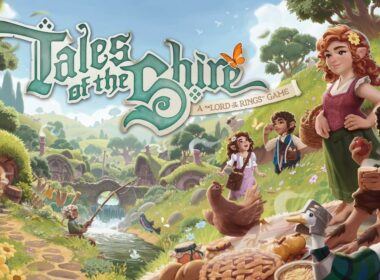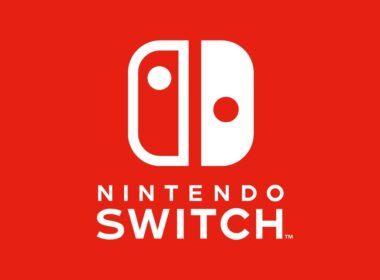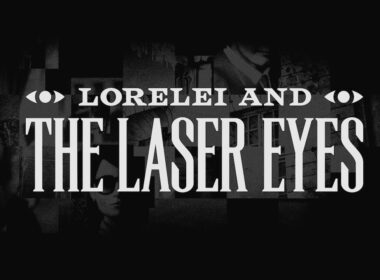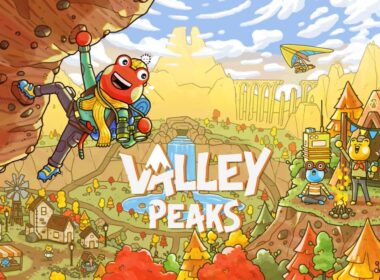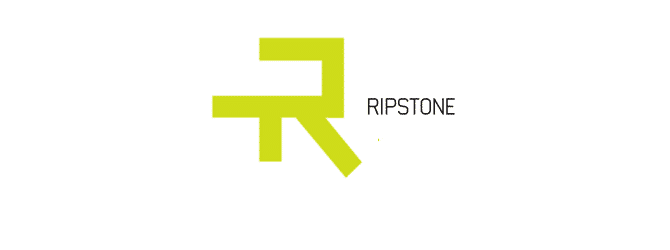 With Nintendo’s concerted efforts to entice indie developers to Wii U and 3DS, we took the time to talk to a man who’s part of a team that prides itself on ensuring they can do so with the additional support necessary for success.
With Nintendo’s concerted efforts to entice indie developers to Wii U and 3DS, we took the time to talk to a man who’s part of a team that prides itself on ensuring they can do so with the additional support necessary for success.
Have a read as we sit down with Ripstone’s co-founder and creative director Phil Gaskell, chatting about the company’s origins, their confirmed Nintendo eShop projects, and what it’s been like working with the Kyoto-led outfit.
Nintendo Insider: Hi Phil, thanks for taking the time to speak with us. Firstly, could you let us know more about Ripstone?
Phil Gaskell: Ripstone was set up by myself and Leo Cubbin in 2011, along with help from Will Clarke and Paul Higgins who are heavily involved in the UK film industry. We pride ourselves as a company built on honesty, integrity and trust. We’re very focussed on providing as much help as we can to indie game developers to get their games out on a variety of digital platforms, in a way that’s fair and supportive to the developers themselves. I guess you could call it Publishing 2.0, someone once called us a publisher with a conscience which I quite liked. We’ve released games across PlayStation 3, PS Vita, iOS, Android, PC, Mac & Linux; with games ranging from toilet-based line drawing game Men’s Room Mayhem to twin-stick shooter Big Sky Infinity.
NI: What was your initial ambition behind starting a new company dedicated to supporting the indie development scene?
PG: Over the 20 years I’ve worked in games I’ve been lucky enough to experience both sides of the coin. The first half of my career I spent designing and producing games, sweating the process, so I know exactly what it’s like to work long hours to meet a milestone, only for the publisher’s representative to breeze in and change things, or worse say “Didn’t you get the memo? We already slipped the date!”.
For the other half of my career I’ve worked in publishing learning about the business end of games and what really matters, and trying not to be that guy! So in setting up Ripstone we wanted to create a publisher that was sensitive to the creative process, that understood and helped nurture the sometimes raw talent that we see in indie studios, but also one that had a good business head that would ensure the games succeeded commercially and avoided the mistakes we’d made in the past.
NI: Has your previous experience helped shape your knowledge of particular areas where you feel more help is needed to bring their games to market?
PG: Definitely. I think it’s easy to spend all your energy working on the vision of a project and not spend enough time and attention needed to complete a game. Shipping a game isn’t just about developing the gameplay side of things, but all the extra stuff that goes on around it. Technical requirements like what happens when the HDD is full and you can’t save the game, or when a player loses their internet connection before they post their best ever score to the ranking boards.
Smaller teams (and I include myself from my dev days) never leave enough time for bug fixing, polishing and balancing. Everything takes longer than you think in production, so you tend to compress the back-end of a project as a way of gaining at the front. But it never really works, you end up with 4 weeks to debug your game and really it takes much longer than that. So we help teams set realistic schedules, we work with them to ensure they have the right level of funding to achieve their vision and that we’re targeting the right audiences on the right devices, and we spend a lot of time and attention working with developers on the marketing plan to make sure plenty of noise is being made in all the right places.
NI: Having already successfully delivered games to other platforms, was it Nintendo’s newly invigorated indie stance that signalled further interest in considering their platforms as an option?
PG: It’s a mixture of things really. Partly personal, me and my two young sons are playing lots on the Wii U right now, so I wanted to put some games on there they could play by their Dad! The other decider was a more commercial one. When we spoke with the guys at Nintendo Europe they were very excited about the prospect of both Pure Chess and Knytt Underground coming to their platforms. Nifflas worked with NICALiS on Night Sky which is a WiiWare title, so Nintendo were keen to see Knytt Underground come to Wii U. With Pure Chess we saw a great opportunity to provide something that really showcases what the Wii U and 3DS can do, and when Nintendo pointed out they didn’t have any chess games in the eShop it was an easy call to make.
NI: How have Nintendo been to work with? Are they fairly receptive, or have there been any struggles along the way?
PG: So far they’ve been nothing short of a dream to work with. They are very supportive when it comes to helping with development kits, supporting the developers when they’re trying to achieve something new or complicated, and they always get back to us promptly. When we asked them about opening up the platform a little more to allow iOS and Android Pure Chess players to play against Wii U and 3DS players, we thought they would close the door straight away, but they were really into the idea and quickly modified their policy to allow it. This is a great example of how they are changing their approach to be much more open.
NI: Even with disappointing Wii U hardware sales, emerging indie support for the console is progressively becoming overwhelming, with even more appearing on the horizon. Why do you think that is? Has the low install base ever been a concern?
PG: Disappointing depends on your starting position. If you’re spending fifty-million dollars building tent-pole franchises then you need big audiences to make the mathematics work. Small, nimble companies like Ripstone and the indie developers we work with, don’t spend such huge amounts making the game so in turn don’t need huge audiences. When big corporate publishers start to pull out of consoles it makes me sit up and want to support it, because they’re leaving loyal gamers, hungry for games.
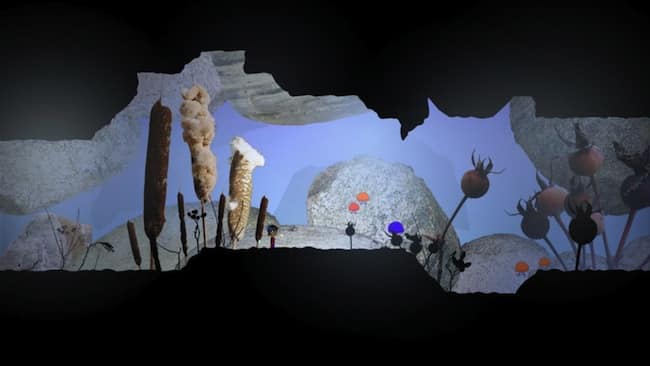
NI: Now onto the games, and you’re delivering two entirely different experiences across Wii U and Nintendo 3DS. Could you tell us more about Knytt Underground, the team behind it, and what players can look forward to?
PG: Nicklas Nygren aka Nifflas is a Swedish indie game developer best known for his freeware games Within a Deep Forest, Knytt, and Knytt Stories and his commercial games Saira and Night Sky. He’s a truly amazing guy with a passion for creating and a legendary beard! He’s one of those super talented people that can write code, design levels, create artwork, and even compose music. Nifflas has help from a coder friend called Mathias Kærlev, who he says is the best programmer he’s ever met! Mathias helped to create the desktop versions and was hand-picked by Nifflas to work on the Wii U version with us.
As for the game itself, Knytt Underground is the sequel to the massively popular Knytt and Knytt Stories, the original boasting over 1 million downloads globally. In this iteration; humans have long since abandoned the planet after practically destroying it in a war, five hundred years ago. The remaining population of Sprites, Fairies and various other life forms now live in mysterious tunnels underground – where they are trying to discover the secrets of their origin and the meaning of life.
Mixed up in all of this curiosity is Mi – a mute but extraordinary sprite. She develops special powers as the game progresses and embarks upon many exciting quests on her adventure. Her main goal is to find and ring the six bells of fate before time runs out. If she doesn’t a destructive chain reaction will begin that will obliterate the entire planet! There’s one small detail though; the odds are its just superstitious nonsense and the world isn’t really ending…
NI: I’ve heard that it’s already a fairly expansive game, but will there be any content unique to the Wii U version? Do you have any ideas yet as to how the Wii U GamePad will be supported?
PG: Yes it’s a vast game, and the Wii U version will be even bigger. Since completing the original game Nifflas has been working on a huge update called the Infinity Hype update and console gamers will get to experience it exclusively on the Wii U. The game is split into three chapters. Chapters 1 & 2 are small tutorial levels where you learn how to control Mi in each of her two forms, and Chapter 3 is where the real epic adventure begins. It definitely isn’t a short experience, even when you know what you’re doing it will take you many hours to complete. If you want to explore every room and find every secret (Nifflas has said this game has more secrets than any other game he’s designed) it will take you even longer. Especially if you want to find the secret ending!
When it comes to supporting the GamePad I’m a huge fan of off-TV play, as it stops so many arguments in my house, so we’ll definitely be supporting that. Beyond off-TV we’re looking at how the GamePad can enhance the game, so expect it to be used for things like displaying the huge world map, and Mi’s inventory.
NI: Pure Chess is almost at the opposite end of the spectrum to this, although should pique the interest of fans looking for a good strategic challenge. Could you talk about its creators and content?
PG: [laughs] We do have quite an eclectic mix of games, don’t we? But then that’s what I love most about indie games, they are so diverse and they aren’t afraid to embrace risk!
Voofoo Studios are the creative brains behind Pure Chess and have become synonymous with high-fidelity visuals. I worked with them on the PSN version of Hustle Kings when I was at Sony, so when they suggested doing to chess what they did to pool I jumped at the chance to work with them again.
Pure Chess is the most spectacular chess game you’re ever likely to play. The main game features three different sets of chess pieces to play with in a selection of different materials, and in three stunning locations. It’s not just about the visuals though, the game also features 10 different skill levels tuned at the higher end by a genuine chess Grandmaster so it plays as good as any professional (and expensive) chess AI out there.
The game features 100 chess puzzles to scratch your head over, a single player tournament mode with three levels of difficulty, and a comprehensive tutorial mode that will help improve your chess strategies and abilities. It’ll teach you the very basics like how each piece moves, but it also takes you through more complex moves like castling and en passant. It will also clearly explain more advanced tactics such as pins and skewers, and even some opening plays. We’re pretty confident there’s something there for everyone, from the novice to the more advanced players. My chess abilities certainly improved immensely while working on the game.
The feature we’re most proud of though is the cross-platform online multiplayer. By using our own servers we’ve significantly enhanced the multiplayer since launching on PSN, so it’s a much slicker experience. Even though the play is asynchronous it works much more seamlessly now, more like live online. As soon as one of you leaves the game it doesn’t matter, you can carry on over a longer period sending moves to each other like a true play-by-mail game. And of course the game supports cross-platform play.
That means that not only can Wii U players play against 3DS players, but they will also be able to play against tablet and smartphone players too! All they will need to do is register in game for a Pure Chess account (a process we’ve made as simple, safe and easy as possible) and then start issuing challenges to their friends or even to strangers on the ranking boards! One of the beauties of registering for a Pure Chess account is if you own both the smartphone/tablet and console versions you can log in and continue your multiplayer game on any of those devices seamlessly!
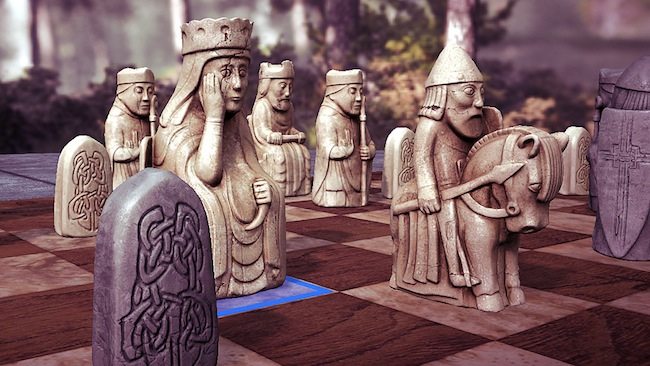
NI: I’m still amazed by the incredible visual detail they’ve achieved. Has it taken the team long to bring the game across to Wii U?
PG: Not at all, they’ve found it very easy to work with Nintendo’s libraries. They had access to the SDK before they had kits and they managed to get the game running quite quickly, of course they couldn’t see anything until the kits turned up!
NI: Did Voofoo encounter much challenge in tackling the stereoscopic 3D effect within the handheld version?
PG: Again it was pretty straightforward. Given the reduced processing power available to us on 3DS we’ve had to make a few compromises, but we’ve managed to maintain the high fidelity visuals, albeit with a limited view. The game already supported stereo 3D on PS3 so adding support for it on 3DS was easy.
NI: Have you had much experience playing on either the Wii U or Nintendo 3DS yourself? What are your thoughts on their individual concepts?
PG: Yes lots. I’m a hardcore gamer and have been for thirty years! I’ve owned pretty much every computer and console since the 1980’s. That fanatical love of games has transferred into my kids too, and we play a lot of games together. On Wii U we’re playing quite a bit of Super Mario Bros U and I love the fact they can play independently with just a little bit of help from me on the GamePad. We’re also playing Just Dance 4, and I’m giddy at the chance to introduce my boys to Wind Waker HD (imho the best looking Zelda ever made). For me the big revelation was the off-TV support using the GamePad. It meant the main TV in the house wasn’t being monopolised. My only gripe is the way you can’t take the GamePad upstairs or even out of the room, which is a big shame.
On 3DS my wife is a big fan of Animal Crossing: New Leaf so she’s playing that right now – I’m looking forward to getting some time on it and finding out if Tom Nook is still a crooked slave driver! I’d like to see more intimate connectivity between the Wii U and the 3DS and I’m eager to see how Animal Crossing Plaza evolves over time.
NI: Are there any other games within your current portfolio that you would consider also bringing across?
PG: Yes we have a number of unannounced games we’re working on for PS4 and Xbox One which we’ll also ensure have Wii U support, and once Voofoo’s core technology is Wii U compliant we’ll probably chat about bringing Big Sky Infinity over. I’d also love to see Men’s Room Mayhem out on 3DS one day too!
NI: Will the performance of these two titles determine further support for the consoles, or do you already have future plans?
PG: For us it will be a longer-term decision. We have more Wii U titles already in the pipeline so we’re not going to cancel them if these first two games don’t perform well. When you commit support to a platform you can’t just do one or two games, I think you need to make a full and meaningful decision to support the platform for a year and then take stock at the end of it. So throughout 2014 we will be publishing games for Nintendo platforms, and as long as gamers keep buying them we’ll keep helping developers to make more!

